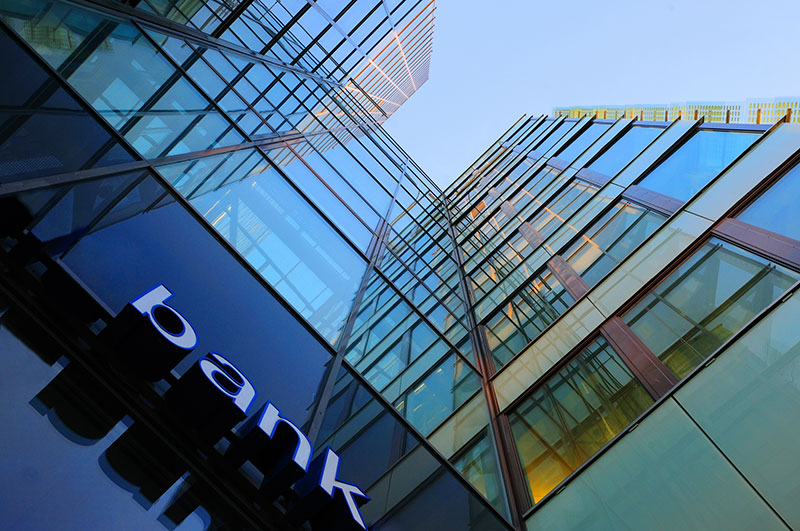Hartford Core Equity Fund is a diversified portfolio of large-cap US equities. The Fund’s historically consistent returns, lower-beta profile relative to the S&P 500 Index, and risk-weighted positions have helped it deliver lower drawdowns during periods of market stress. We believe the experienced portfolio-management team and the deep resources of Wellington Management are well-positioned to identify potential winners and losers over a full market cycle.
Improving and Persistent Fundamental Quality
When evaluating a company, we look for signs of improving quality. This isn’t only found in companies in the highest-quality quartile, but also those in the next tier that show characteristics that could help them rise in quality. Improving quality can manifest itself several ways: improving cash generation, decreasing capital intensity, earning a greater return on existing assets, or improving incremental returns on each new asset in which a company invests.
For example, Ingersoll Rand, a global leader in flow-creation technologies, matches our criteria. Nearly 30% of the energy generated within a factory is derived from pumps and compressors, and Ingersoll’s products deliver meaningful efficiency gains not only from improved product design, but also from delivering on guaranteed “uptime” specifications. We believe the company’s energy efficiency is an underappreciated driver of demand, and their ability to successfully offer value-add services to customers may be both revenue and margin accretive over time.
Another pillar of our investment philosophy is the belief that the market underestimates how long fundamental improvement can persist. As a company starts to be more cash generative, it can focus these additional resources on improving its competitive advantages and widening its gap vs. competitors.
TJX Companies exemplifies this concept. TJX has thrived in recent years and expanded its footprint while many other brick-and-mortar retailers have had to close locations due to severe competitive pressure from Amazon and e-commerce. TJX has created a compelling treasure-hunt experience that gives customers access to premium brands at discounts, encouraging more frequent visits and building customer loyalty. This dynamic, along with strong inventory management and excellent execution, shields the company from online disruption and helps facilitate growth despite the challenging backdrop for many other retailers.
Risk Management and the Role of Portfolio Construction
We also view portfolio construction as an important component of the investment process. Active managers frequently underestimate the range of potential outcomes when assessing conviction in investment ideas. We seek to avoid this trap by risk-weighting position sizes to diversify risk more broadly.
FIGURE 1
Security Weighting Is Just as Important as Security Selection

Larger circle = larger position size. For illustration purposes only, not representative of actual portfolio or position sizes.
The portfolio targets a lower risk profile relative to the S&P 500 Index. This may provide a potential additional layer of lower downside-capture beyond those inherent in the team’s investment framework. The Fund’s shareholders have benefited from this risk-conscious approach by realizing lower downside capture than many peers over the past 10 years (FIGURE 2).
FIGURE 2
Strong Performance With Less Risk
Performance Characteristics (1/1/15-12/31/24)
| Return (%) |
Down Capture Ratio |
Up Capture Ratio |
Alpha | Beta | Sharpe Ratio | |
| Hartford Core Equity Fund I | 12.73 |
91.51 |
93.95 |
0.30 | 0.94 | 0.78 |
| Morningstar Large Blend Category Average | 11.57 |
100.52 |
92.72 |
-1.19 | 0.99 | 0.67 |
| S&P 500 Index | 13.10 |
100.00 | 100.00 | 0.00 | 1.00 | 0.76 |
Past performance does not guarantee future results. Indices are unmanaged and not available for direct investment. Please see below for standardized performance. The returns shown above were calculated using Morningstar’s extended-performance methodology. Data Sources: Morningstar and Hartford Funds, 1/25.
Why the Hartford Core Equity Fund?
Because we believe the market tends to underappreciate the persistence of fundamental improvements, we typically hold companies for 3-5 years, allowing returns to compound over time. In addition, the diligent portfolio construction that’s integral to our investment process helps us to risk-weight position sizes to diversify the Fund’s exposures. Finally, we believe the Hartford Core Equity Fund is well-positioned to withstand bouts of market volatility because we target a beta below that of the S&P 500 Index while striving to keep pace with peers during up markets through security selection.
Performance data quoted represents past performance and does not guarantee future results. The investment return and principal value of an investment will fluctuate so that an investor's shares, when redeemed, may be worth more or less than their original cost. Current performance may be lower or higher than the performance data quoted.
SI = Since Inception.
Fund Inception: 04/30/1998
Share Class Inception: 3/31/15.
Class I-share performance prior to its inception date reflects Class A-share performance (excluding sales charges) and operating expenses. SI performance is calculated from 4/30/98.
| Top Ten Holdings as of 12/31/24 | (%) |
|---|---|
| Apple, Inc. | 8.22 |
| Microsoft Corp. | 6.60 |
| NVIDIA Corp. | 6.35 |
| Amazon.com, Inc. | 4.98 |
| Alphabet, Inc. | 4.95 |
| Broadcom, Inc. | 3.02 |
| Meta Platforms, Inc. | 2.46 |
| Mastercard, Inc. | 2.39 |
| JP Morgan Chase & Co | 2.38 |
| Eli Lilly & Co. | 2.06 |
| Percentage of Portfolio | 43.41 |
Why Use Hartford Core Equity Fund in DC Plans?
Hartford Funds believes the Hartford Core Equity Fund may be an excellent choice for DC plans for these reasons:
Combats concentration risk
The Fund recognizes the equal importance of stock selection and stock weighting; maximum exposure to any individual security generally will not exceed 5%, helping to minimize uncompensated risks.
Lower beta profile relative to the S&P 500 Index
In addition to its rigorous security selection and portfolio construction processes, the Fund's lower-beta profile relative to the S&P 500 Index and risk-weighted positions have helped it minimize downside capture during market drawdowns.
For more information on the Hartford Core Equity Fund, please talk to your Hartford Funds representative.
Beta is a measure of risk that indicates the price sensitivity of a security or a portfolio relative to a specified market index.
S&P 500 Index is a market capitalization-weighted price index composed of 500 widely held common stocks.
Important Risks: Investing involves risk, including the possible loss of principal. Security prices fluctuate in value depending on general market and economic conditions and the prospects of individual companies.
This communication is provided solely as general information about our products and services and should be considered general investment education. None of the information provided should be regarded as investment advice or an investment recommendation. Neither Hartford Funds nor its affiliates are undertaking to provide impartial investment advice to any individual investor or retirement plan sponsor. If you are an individual investor or retirement plan sponsor, contact your financial professional or other fiduciary unrelated to Hartford Funds about whether any given investment product or strategy may be appropriate for your circumstances.
The views expressed herein are those of Wellington Management, are for informational purposes only, and are subject to change based on prevailing market, economic, and other conditions. The views expressed may not reflect the opinions of Hartford Funds or any other sub-adviser to our funds. They should not be construed as research or investment advice nor should they be considered an offer or solicitation to buy or sell any security. This information is current at the time of writing and may not be reproduced or distributed in whole or in part, for any purpose, without the express written consent of Wellington Management or Hartford Funds.







